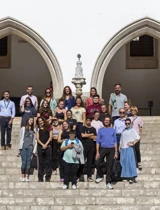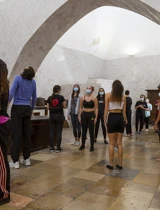Multiplier events

The results of the project were publicly presented on 15 December 2023 in two simultaneous sessions, one at the National Palace of Sintra and the other at the Palace-Museum of King Jan III in Wilanów, during which there was also discussion about the potential of developing a thematic approach in the permanent exhibitions of the palace-museums and about the advantages of using arts and heritage as a means of education.
The session at the National Palace of Sintra focused on the educational potential of permanent exhibitions based on a thematic approach and was an opportunity for the project team to present at a local level how the palace's museographic renovation aims to meet the needs of students and schools. For this event, the Directorate of Culture of the Lisbon City Council and EGEAC were invited to share their experiences in establishing networks between the cultural facilities under their management, the schools of the Lisbon municipality, and the artistic community.
For the session at the Palace-Museum in Wilanów, the main focus was on the methods in which performing arts, namely dance, in collaboration with heritage, can contribute to fostering critical thinking skills in young people. The session was attended by the deputy director of the Polish National Institute for Music and Dance, as well as other professionals from the National Museum in Wrocław and the Łazienki Królewskie Palace in Warsaw.
The main results of the project were presented during these sessions, highlighting how the joint work of the six partner institutions helped change the perspectives of the young people who participated in the project about the palaces of Sintra and Wilanów. For around 30% of the students, their view of heritage changed completely, while another 40% stated that their vision had changed considerably. In parallel, 40.5% of students also reported having considerably increased their interest in the history of the palaces, while another 13.5% reported having drastically increased their interest in the history of the palaces.
This project, which received European funding of around 300,000 euros, involved a total of one hundred students and produced eight contemporary dance workshops; two final site-specific dance performances; two student exchange actions; two exchange actions for professionals from the palaces participating in the programme; a digital game-app that is now part of the palaces' educational services; and a new visit guide especially designed to stimulate critical thinking skills in young people.


